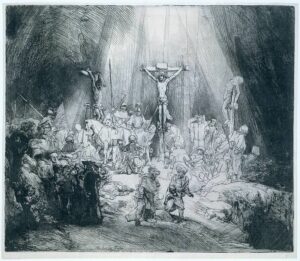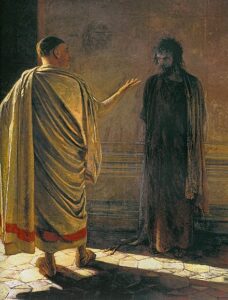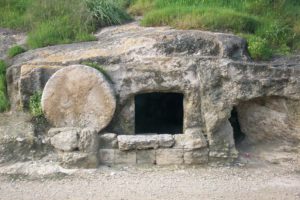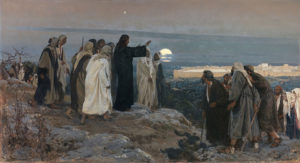Many Christians are familiar with the tradition of remembering Jesus’ Seven Last Words from the Cross during Passion Week. The seven last words tell us what the cross meant to Jesus. They also ask us what the cross means to us. Jesus’ last words confront our deepest fears, and call us to face them in the power of his victory.
The Cross and the Empty Tomb
Lent: Yes or No?
Using those little plastic all-in-one communion capsules—one website actually calls them the miracle meal—to celebrate the Lord’s Supper is not that different from observing Lent. Both practices, one ancient and the other quite contemporary, are means toward an end, enabling us to enrich our life in Christ in community with other believers. It’s all a matter of how we participate. Jesus and Paul don’t tell us anything about plastic all-in-one Communion capsules—they tell us to observe the Eucharist to remember the Lord’s death until he comes. And neither do Jesus and Paul tell us to practice a 40-day period of self-denial and reflection before Easter—they tell us about cruciformity, that our lives should be centered on and modeled after the life, death, and resurrection of Jesus. So if we can handle taking communion with little plastic capsules, we should consider observing Lent.
Speaking Truth to Power on Good Friday
In this post we focus again on the Gospel of John, where power figures largely into the story of Jesus before Pilate. The Jewish leaders were not empowered by Rome to carry out capital punishment on their own, so Pilate the governor enters the story. Frustrated by Jesus silence, powerful Pilate threatened him with crucifixion (John 19:10). That’s when Jesus spoke truth to power. When Jesus spoke truth to power, Pilate spoke power to truth. But Jesus true truth trumped Pilate’s false power. There are many ancient remains in the Mediterranean world that testify to Rome’s powerful past. There are living churches all over the planet that testify to Jesus’ past, present and future power. That’s the truth.
Easter Isn’t Over: Learning about Life with Martha, Mary, and Lazarus
Images of an empty tomb, viewed “from the outside in,” are common. Like the first followers of Jesus, we look into the empty tomb as spectators of a historical event. But there’s more to the resurrection than this. We also need to picture the resurrection “from the inside out,” as participants in its power. The resurrection transforms us internally when we open ourselves to God in faith. We need to think of ourselves as looking out of the empty tomb of our past life toward our new life with Christ. We’re not just watching what happened to someone else a long time ago, we are sharing in that experience today. We have risen with Christ!
Following Jesus through Passion Week
The Gospels spend a proportionately huge amount of time on Passion Week for a reason. There is no gospel apart from the cross and the empty tomb. For those who have decided to follow Jesus, there can be no turning back from the way of the cross. Followers of Jesus must follow him through this week that climaxes all four Gospels.
Why does it matter that the tomb was empty?
All too often churches feature the empty tomb only on Easter Sunday, or only during the Eastertide season until Pentecost. Christians commonly present the gospel as the death of Jesus, omitting his resurrection. This reduced, truncated gospel is not the real, triumphant gospel that we find in the New Testament. Perhaps it is not the gospel at all.





